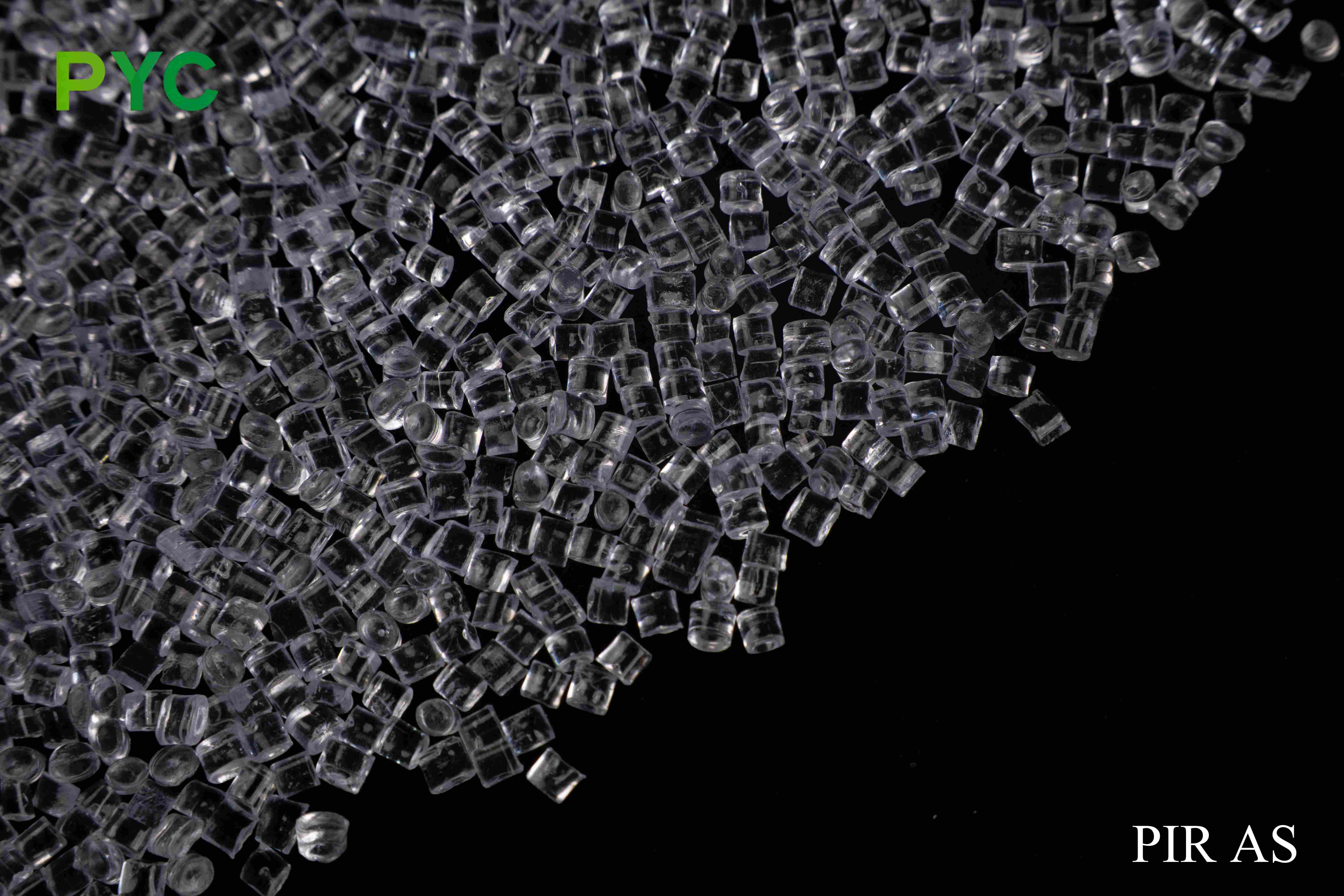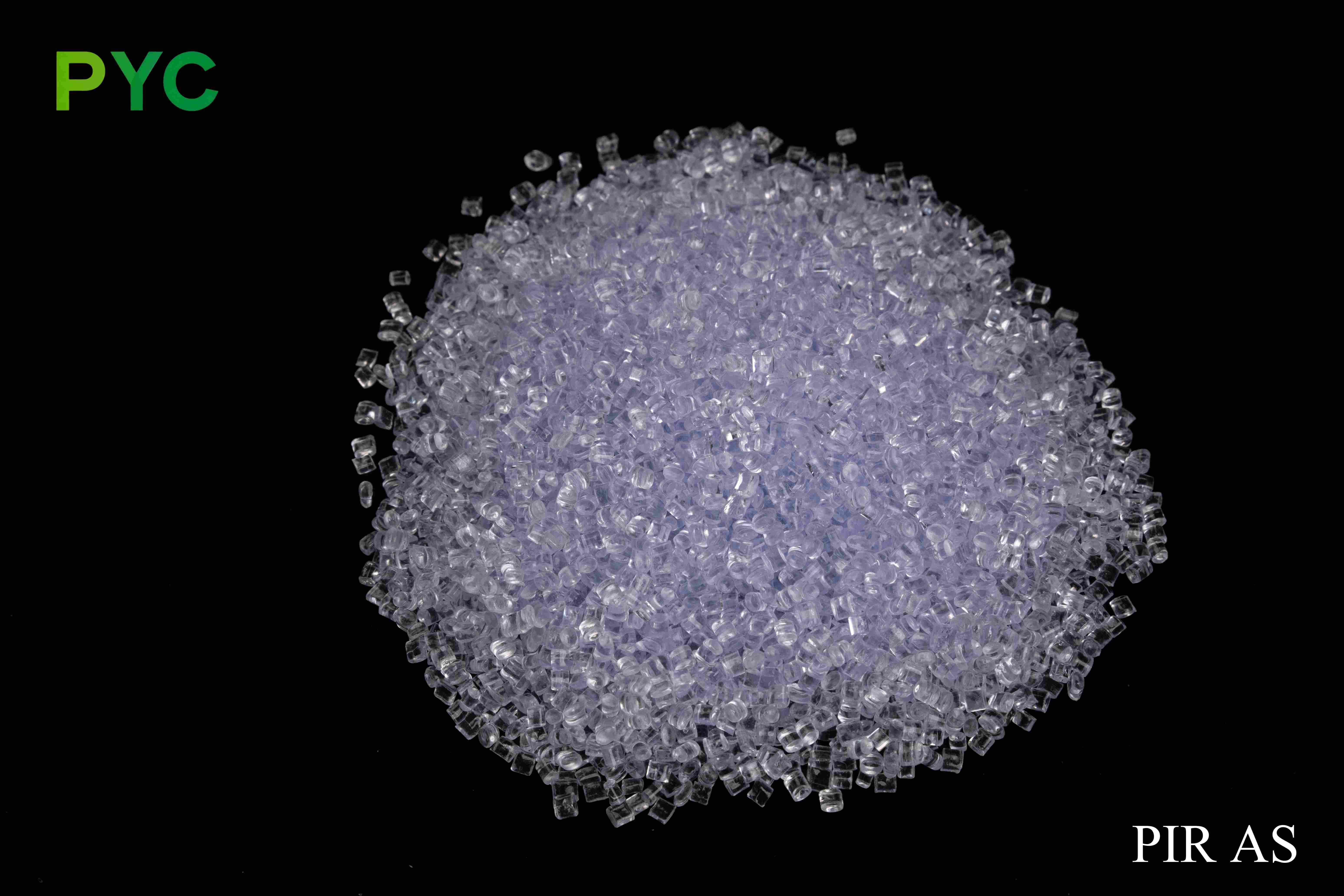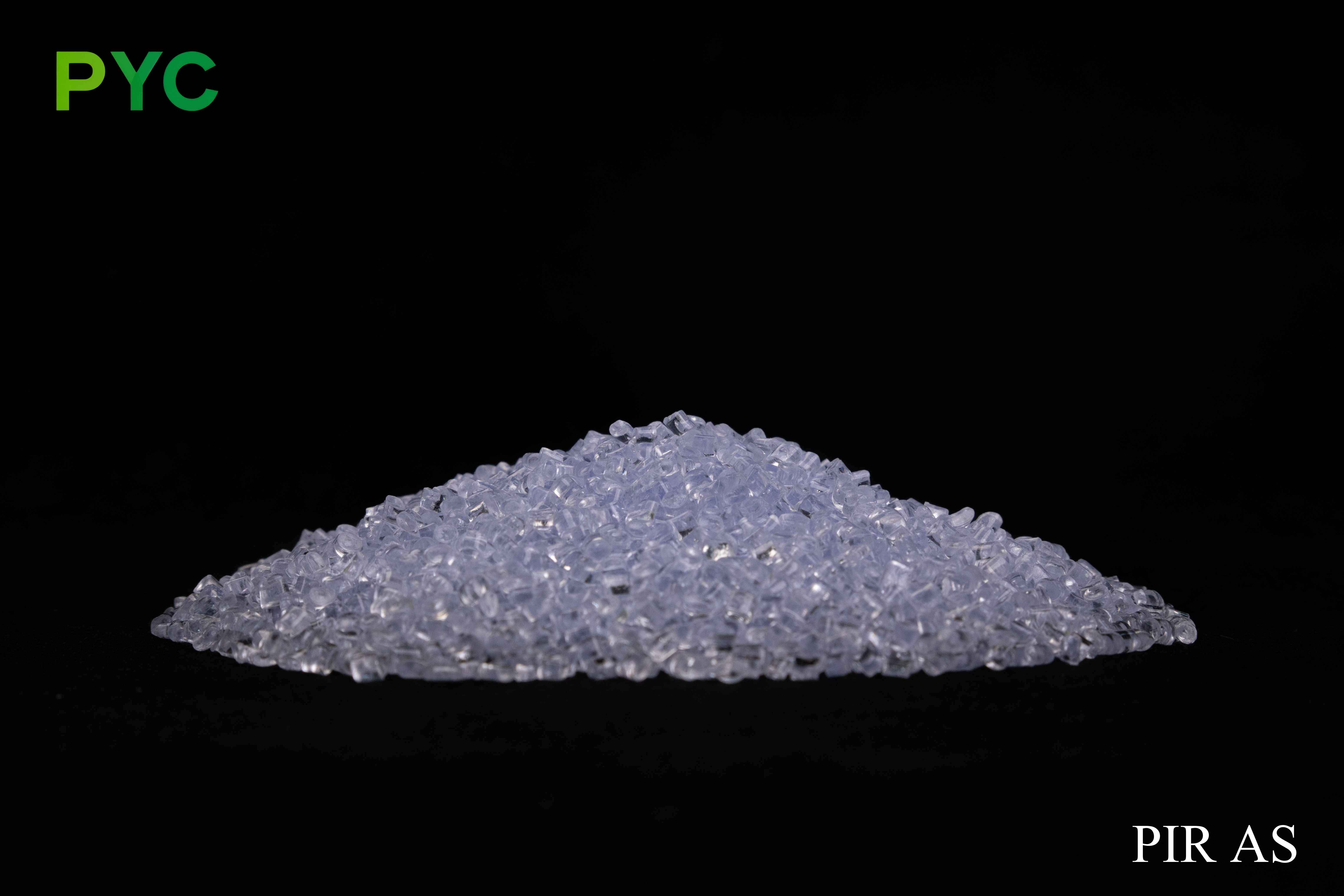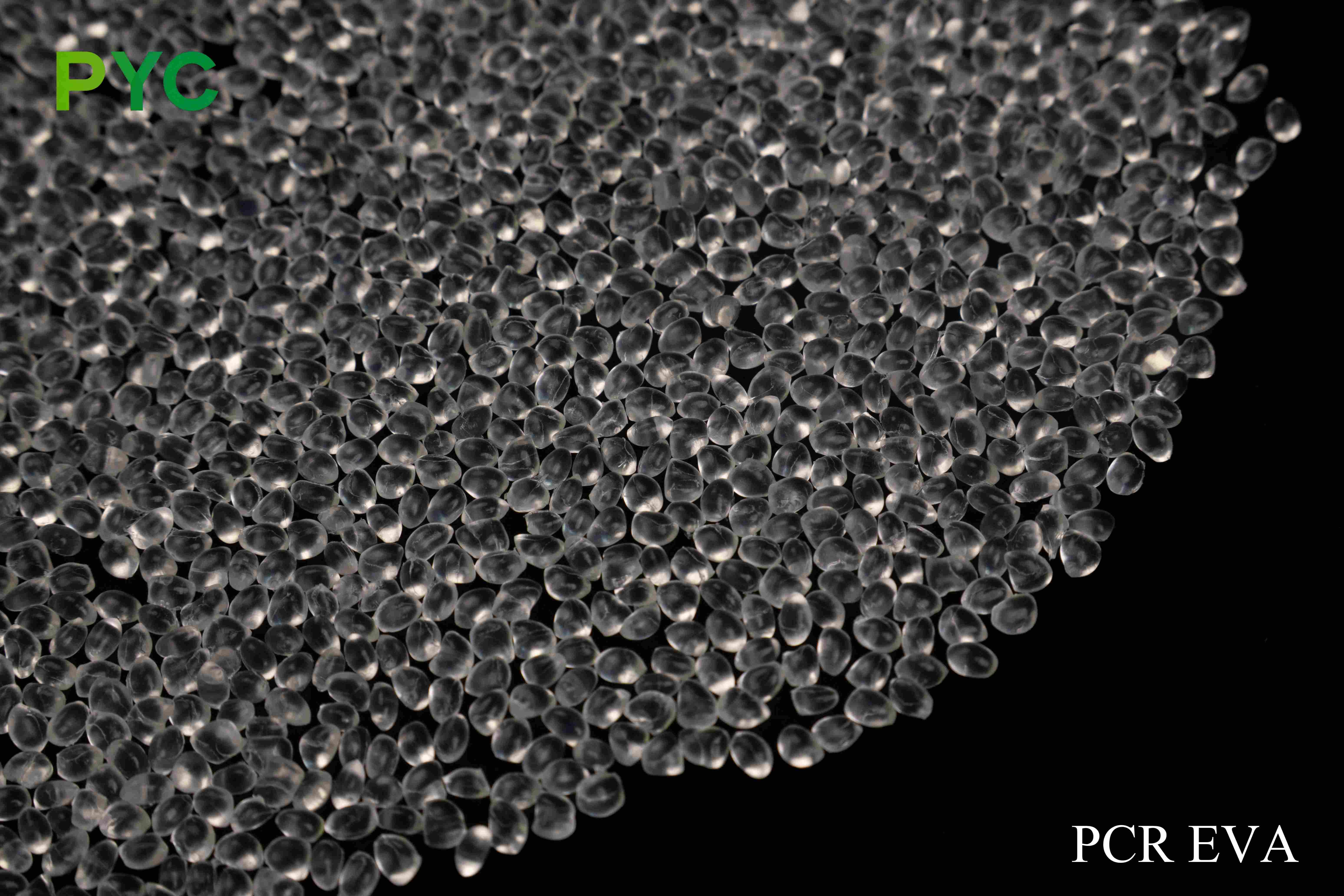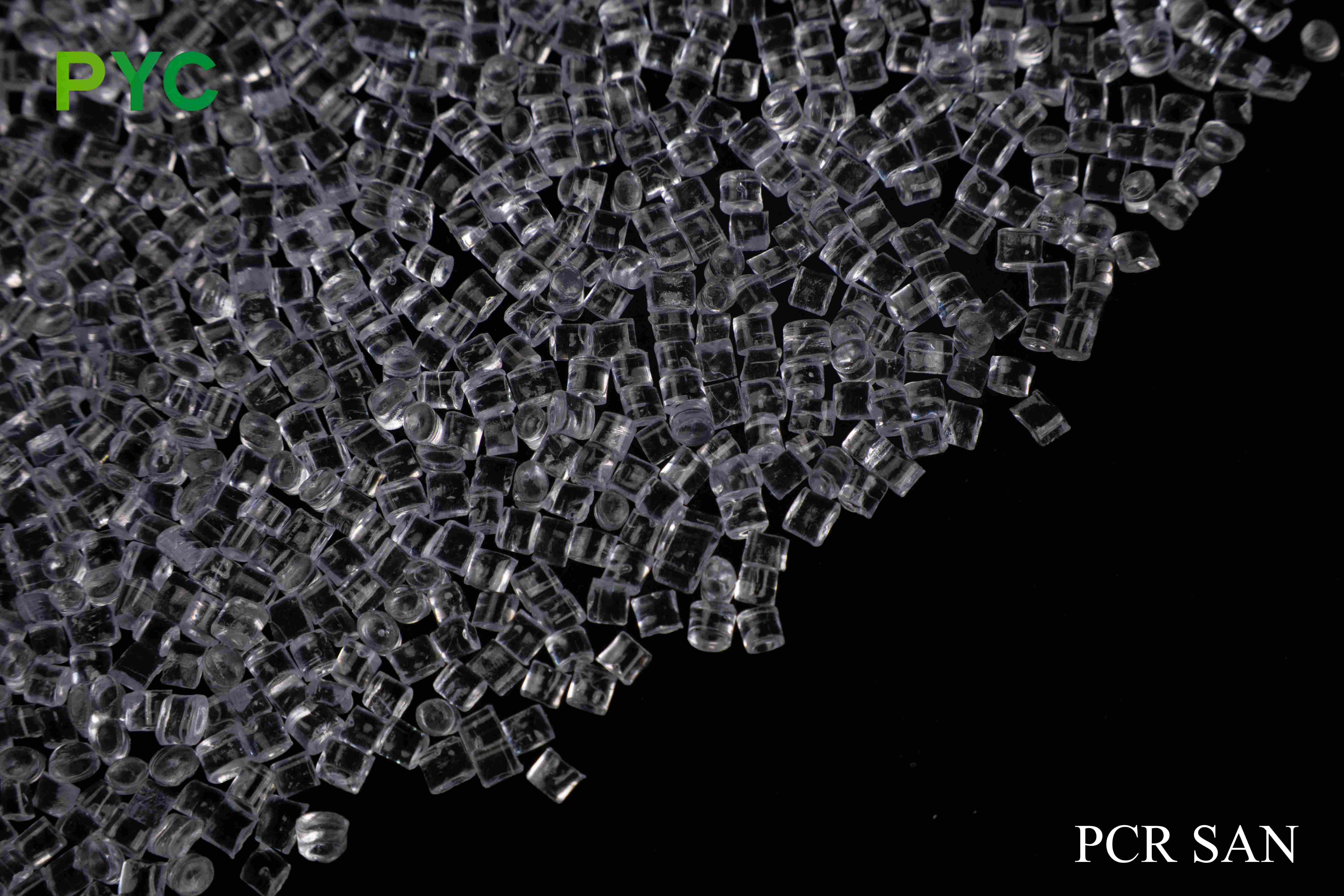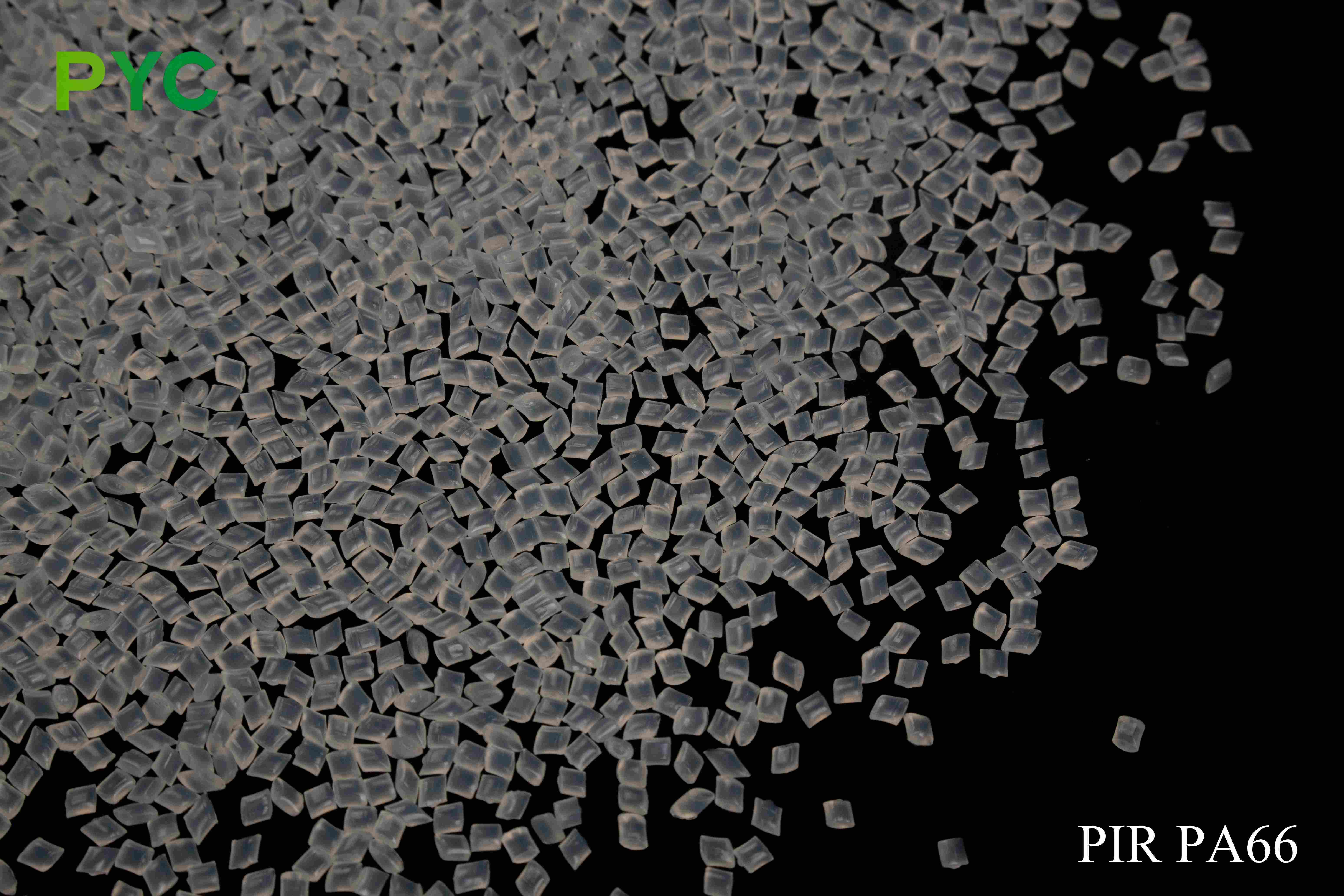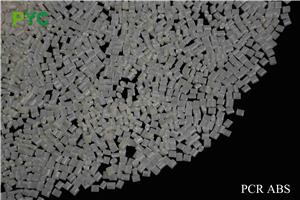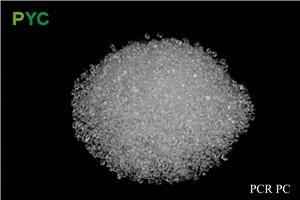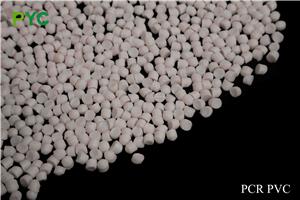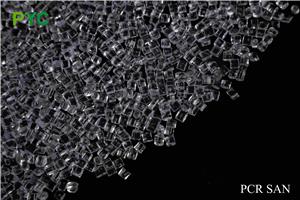PIR AS

PIR AS (PostIndustrial Recycled Acrylonitrile Styrene) post-industrial recycled polyacrylonitrile styrene copolymer
PIR AS (Postindustrial recycled acrylonitrile Styrene) is a type of recycled plastic made by recycling waste materials (such as scraps, scrap materials, etc.) from industrial production processes. It combines the advantages of the two materials, Acrylonitrile and Styrene, with excellent mechanical properties, impact resistance and good thermal stability. PIR AS is widely used in automotive, electronic, electrical equipment enclosures and home appliance industries.
PIR AS product details
1. Specific sources of high-quality recycled raw materials:
Injection molding production waste
During the injection molding process of AS products, some waste materials are often generated, such as runner materials, edges and rejects. These wastes are unused, pure materials and are an important source of high quality PIR AS.
Recycling Source Example:
Runner material: the part of the runner produced during the injection molding process.
Edge: The edge waste generated in the process of product trimming.
Non-conforming products: inferior or defective products produced in production.
Extrusion production waste
During the extrusion production process of AS materials, some waste materials may be generated, such as boot material, color change material and trimming material. These scraps are usually unused, single material and suitable for recycling.
Recycling Source Example:
Start-up material: The initial waste material produced when the equipment is started up.
Color change material: Transition waste produced when changing colors.
Trimming: Edge waste generated by trimming during extrusion.
Thermoforming and blister production waste
In thermoforming and blister molding processes, AS materials are heated to soften and molded into various products. During this process, some waste materials are generated, such as trimmings and trimming waste, which are potential sources of high-quality PIR AS.
Recycling Source Example:
Edge: Edge waste produced during thermoforming process.
Trimming waste: the waste produced when trimming products.
Recycling process
The recycling process for high quality PIR AS typically includes the following steps:
Collection and Sorting: AS waste generated during industrial production is collected and sorted according to material and color.
Cleaning and pre-treatment: The recycled AS waste is cleaned to remove surface dust and impurities.
Crushing and melting: The cleaned AS waste is crushed and subsequently processed into recycled pellets through the melting process.
Filtration and granulation: Filtering technology is used to remove tiny impurities in the molten AS to ensure the purity of the recycled material, which is then granulated.
Quality testing: quality testing of recycled pellets to ensure that their performance meets the relevant standards and application requirements.
2. Strict quality control
The production process of PIR AS follows a strict quality control procedure, with comprehensive testing and inspection from raw material selection to final processing. All products undergo a number of performance tests such as impact strength, tensile strength, heat resistance, dimensional stability, etc. to ensure the quality and stability of each batch.
3. Excellent performance
High Strength and Impact Resistance: PIR AS has excellent impact resistance and is able to maintain stable performance under high load conditions, making it suitable for applications requiring high strength.
Heat resistance: PIR AS has good high temperature resistance, suitable for high temperature working environment, widely used in automobile and home appliance industry.
Good processability: PIR AS has good fluidity and processability during processing, suitable for injection molding, extrusion and other processing methods, and can meet the production needs of different shapes and sizes.
Chemical stability: PIR AS has good resistance to common chemicals and is suitable for use in harsh environments.
4. Environmental protection and sustainability
By recycling industrial waste, PIR AS reduces the accumulation of waste from the production process, in line with the need for sustainable development. It not only helps to reduce the dependence on new raw materials, but also reduces the negative impact of industrial waste on the environment.
5. Cost-effectiveness
The use of recycled materials in PIR AS reduces the cost of raw material purchases, making the products more cost-effective and competitive, helping companies to reduce production costs while complying with environmental requirements.
Application Areas
Automotive industry: Used in the production of body interior, instrument panel, door lining, etc., to provide high strength, impact resistance and heat resistance.
Home appliance industry: such as TV shell, refrigerator shell, washing machine parts, etc., to ensure good impact resistance and high temperature resistance.
Electronic industry: Used in the production of electronic products shell, mobile phone accessories, computer hardware, etc., to provide better mechanical strength and stability.
Industrial applications: such as mechanical parts, industrial equipment shell, etc., with high wear resistance and stability.
Product Advantages
High strength and impact resistance: suitable for the environment that needs to withstand greater pressure and impact.
High temperature resistance: can withstand high working temperature, suitable for automotive and home appliances and other industry applications.
Good processability: suitable for a variety of processing processes, such as injection molding, extrusion, etc.
Environmental protection: The use of recycled raw materials to help reduce waste and resource waste.
Economy: Thanks to the use of recycled materials, production costs are reduced.
Production and technical advantages
Strict quality control: from the screening of recycled raw materials to the optimization of the production process, to ensure the stability and performance of PIR AS.
Adapt to a variety of processing technology: support injection molding, extrusion and other processing methods, can meet different shapes, sizes and performance requirements.

